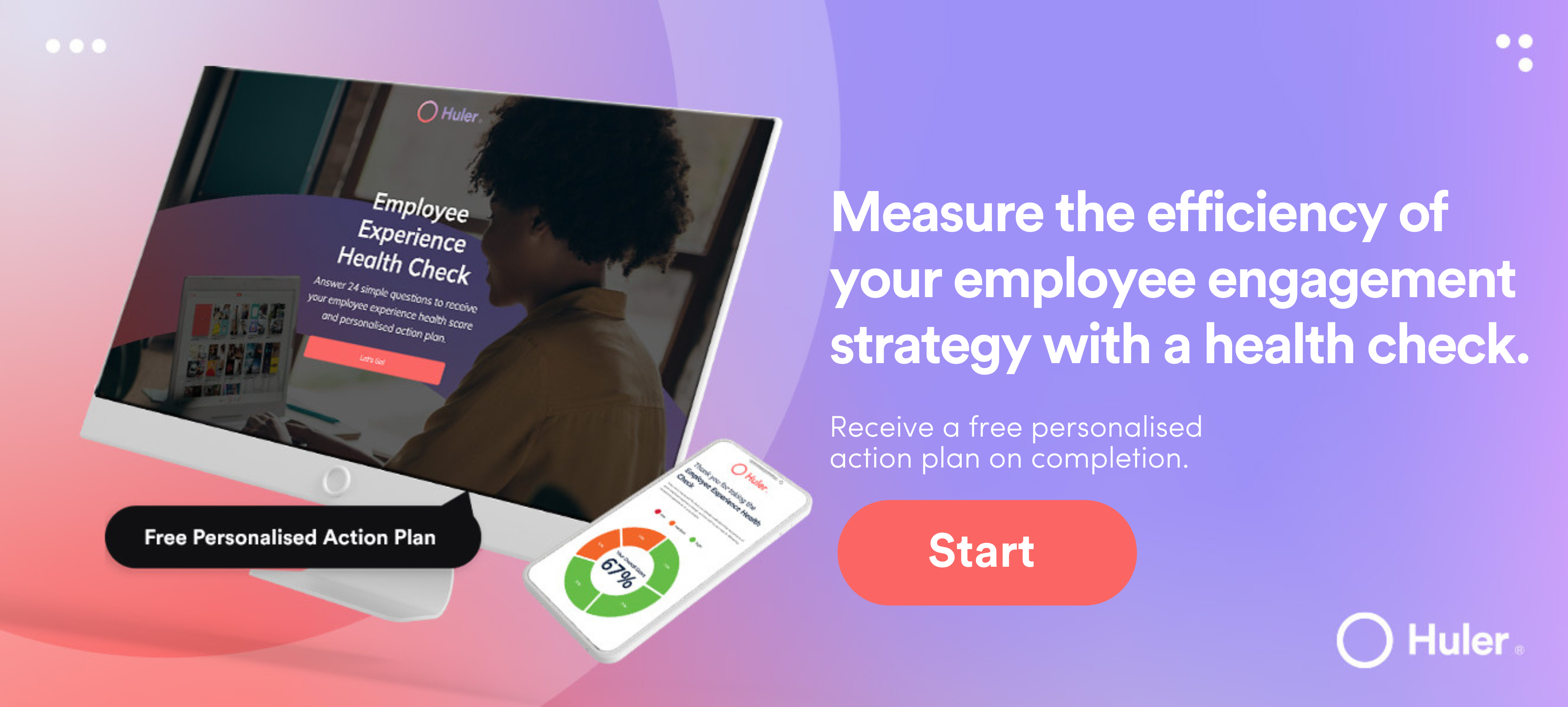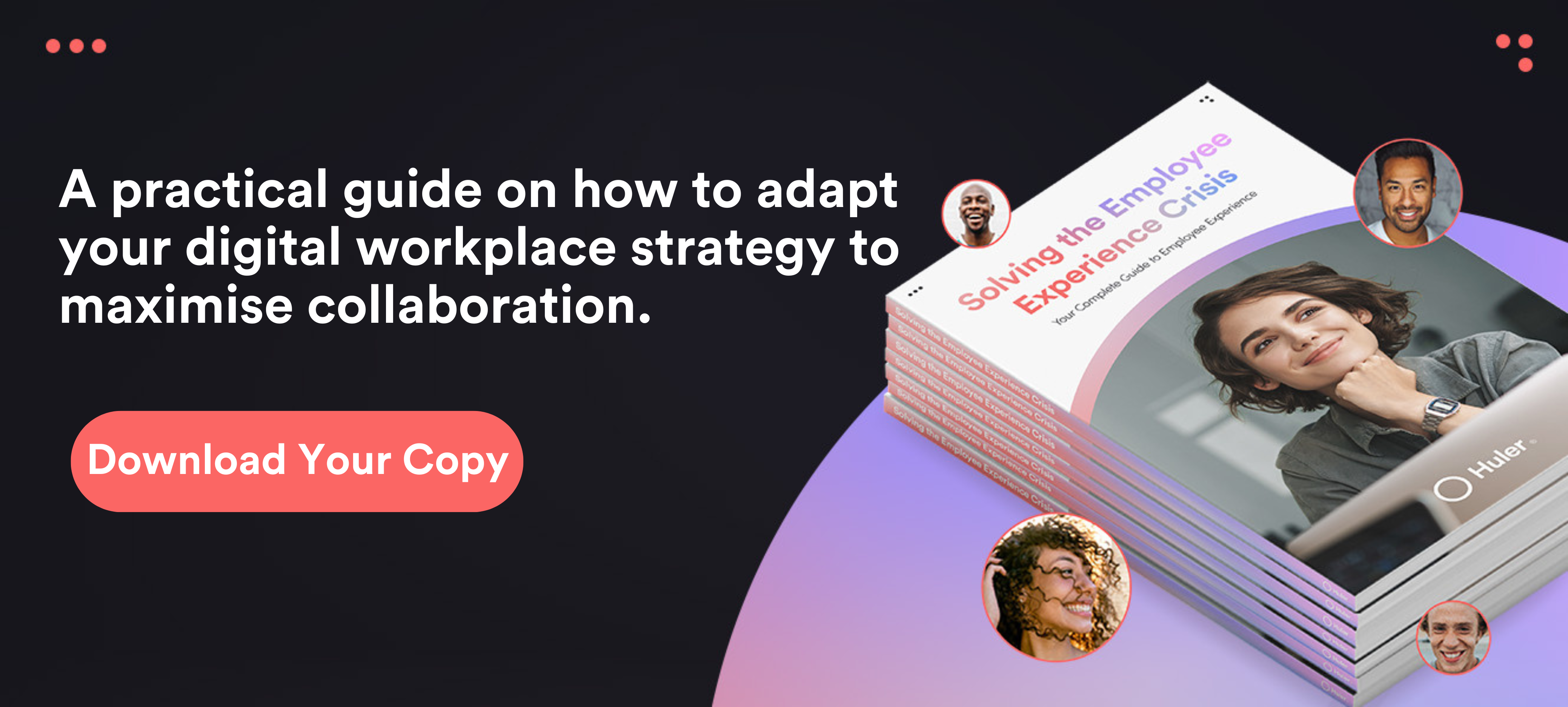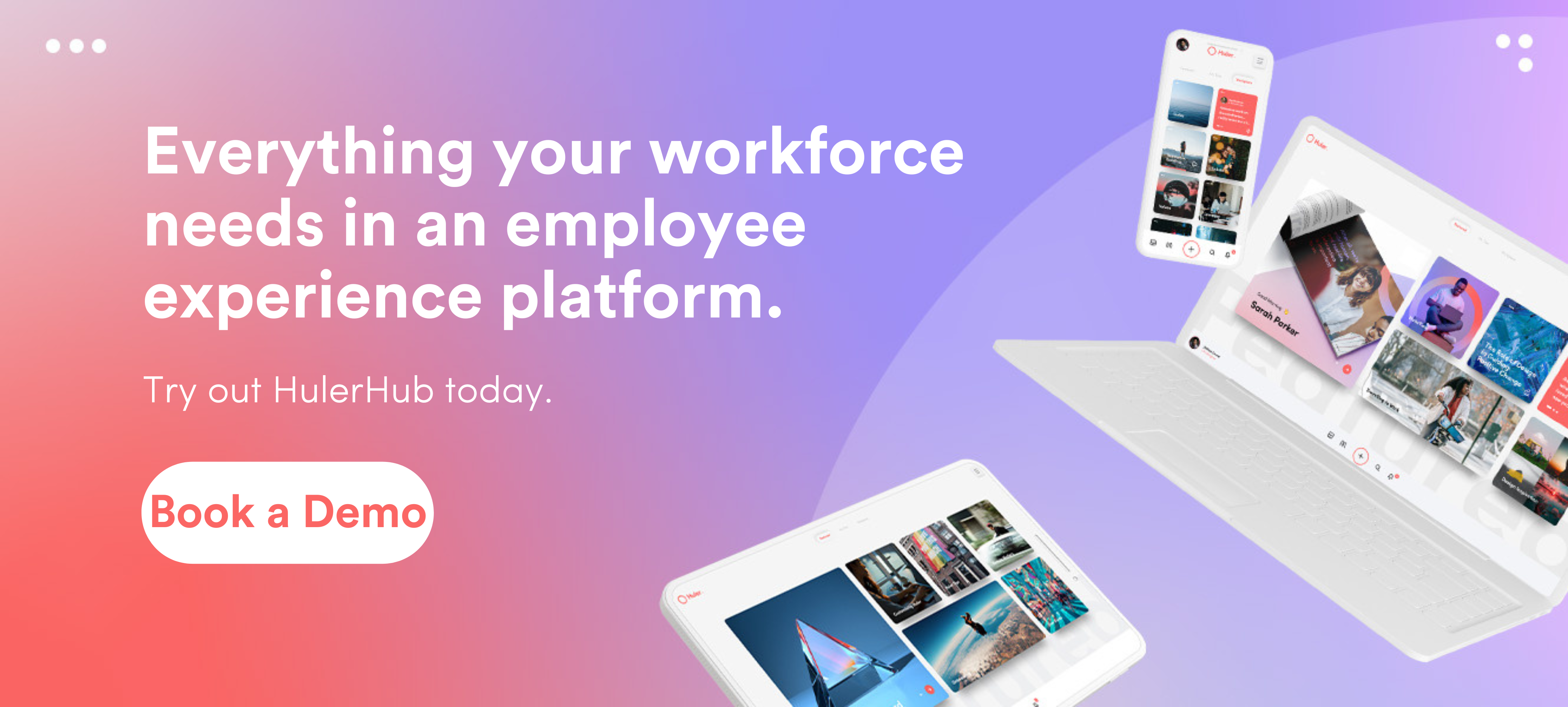The workplace is undergoing big changes. Remote and hybrid work is becoming the norm, shorter working weeks are being trialled and buzzwords like ‘presenteeism’ and ‘Quiet Quitting’ are trending. Workplace habits are changing and businesses, to keep employees engaged, need to change with it.
In this context, people are looking for more than just a good salary at work; increasingly, they’re looking for value and purpose in their jobs. This means they’re more likely to quit if they don’t like their job. A survey from across 44 countries shows that one in five employees plans to quit their job in the next year.¹ In addition, in a survey of 1,000 UK workers, 29% of those surveyed indicated that they plan to find a new job.²
Why are they leaving? Workers are no longer settling for what they get. They want a job that meets their needs and their wants: from having the right tools to get their tasks done, to working within a culture that aligns with their principles.
With hybrid and remote working, creating a people-first culture that caters to employees’ wants and needs — and boosts their employee engagement — has never been more important. A modern intranet provides this. A survey by Deloitte found that those companies that implemented modern intranets experienced a 20% increase in employee satisfaction and an 87% increase in employee retention.³
Fortunately, there are plenty of modern intranets to choose from, from intranets for small businesses to those for larger, enterprise-sized companies. In this article, we’re going to talk about how a modern employee intranet can transform employee engagement, benefitting your employees’ work satisfaction and your company’s bottom line — and how an employee experience platform like HulerHub can tie all a modern intranet’s features together.
What is a modern intranet?
Intranets have been around for decades. They started in the 90s as places to store information, such as employee directories. Since then, modern intranets have emerged. They are mission-critical software to help teams stay aligned, create a positive workplace culture, and create an engaged workforce.
Traditional intranets still exist, and are used by some businesses — but not for the same, people-first focus as modern intranets.
They’re powerful communication tools designed for today’s fast-moving, collaborative workforce. It replaces the traditional hierarchical information structure with a platform personalised to the business and the user. A modern company intranet can help your employees:
- find information faster
- collaborate and communicate better
- share documents and information in real time
- boost and improve employee engagement.
Suggested Reading: For more on what an intranet is and how it can help your business, check out our guide — What is an Intranet? Your Questions Answered
Creating an employee engagement intranet
In its simplest form, a modern intranet’s goal is to provide everything your employees need, in one accessible place, to help them do their jobs to the best of their ability. But it goes further than simply tossing batches of information and a few external links on your intranet and calling it a day.
A modern intranet must also be intuitive. If employees can’t find what they’re looking for, they won’t be able to complete their work, they’ll miss deadlines. And this will, over time, strip away their motivation and damage their employee experience.
Employees can also feel like they’re missing out on information, whether it’s informal company news or important internal announcements. A recent study highlights that 74% of employees feel that they’re missing out on important company information and news.⁴ In the short term, this damages productivity and engagement; in the long term, this damages your profits.
Intranet v digital workplace platforms is particularly important when onboarding new employees — both hybrid and remote. A modern intranet is their point of entry into your digital workplace. It’s their first impression of your company, and the place where they’ll go to get up to speed.
An employee intranet helps ensure all this onboarding is information easily accessible, so new starters won’t feel isolated. Instead, they’ll feel integrated and engaged, helping bolster employee engagement from day one. But it’s not only about giving them the information they need…
It’s customisable
A modern intranet isn’t just a nice to have tool. They’re essential for modern workplaces. That’s because for many employees, they are their workplaces. It’s the platform on which they spend most of their time working, particularly if they rarely or never come into the office.
And just as in the office people set up their desk space in a certain way, people want to personalise their workplace set up as they like and customise their working environment to their needs and preferences.
Modern intranets have this customisation built in. This customisation allows workers personalise which tasks and information they want front and centre, giving them control over their workspace setup.
With a modern intranet, you can customise your intranet in the following ways:
- Customise users’ dashboards: This lets users prioritise certain tasks, collate and pin notifications, create collections so that their knowledge and expertise are stored in a single place, and have things arranged as they like.
- Use your branding: Admins can customise the workplace with the brand’s theme, colours, logo and icons to establish your business’s brand identity. This can help create a consistent employee experience between the physical and digital workplace.
- Built-in applications and widgets: Encourage employees to collaborate and communicate, giving you flexibility on demand when building your company pages.
It not only helps workers customise which tasks and information to prioritise based on their workload (what they need), but it also gives them a sense of control over their workplace (what they want). This helps you create a people-first workspace that builds strong employee engagement.
It lets you recognise people
Imagine you’ve had a really productive week. You’ve worked hard and gone the extra mile. How would it feel if no one noticed? No one gave you a simple ‘thanks’? You might not feel very engaged. And you might not be motivated to go above and beyond again.
But employees who are recognised for their work do feel more engaged. That’s because feeling valued creates a sense of belonging and investment in the company. In fact, companies whose workforce is highly engaged are 21% more profitable.⁵ This is also true for peer-to-peer recognition. Research found that recognition from peers, not money, is the number one motivator for employees to work harder.⁶
Feeling valued and part of something is even more important in hybrid and remote work. In the office, people can lean over or approach you and thank you for your work. Having to type out a message is one more step — and people don’t always take it.
It doesn’t have to be that way. Modern intranets make recognition straightforward with employee recognition features that can:
- Fully integrated: No signing out of one app and into another. By making it simple to recognise someone, it makes people more likely to do it.
- Personalised: Give a virtual high five, send an emoji or write a personalised message to make the recognition unique.
- Visible: It’s nice to get a private message of thanks, but it’s also good to be publicly recognised. Visible on users’ activity feed, a leadership highlights those who have given and received feedback, encouraging people to pay it forward.
Being recognised for a job well done, and feeling valued as a member of the team makes employees feel connected to their workplace, making collaboration more efficient and keeping engagement high. And a well-engaged team is foundational to a successful business.
It improves internal communication
Keeping teams informed and engaged across a distributed workforce working across different time zones can be challenging — especially when it comes to sharing the right information at the right time. Wherever they’re working from and at whatever time, employees still need to communicate, collaborate and stay engaged with their work.
It’s the business’s responsibility to make sure they can do that. Leaving employees to their own devices isn’t going to help how engaged they feel.
As well as accessing information easily, channels of communication need to be set up to streamline work and keep employees up to date. With poor communication, employees will fall behind on tasks and feel disconnected from their peers. Given this setup, an email simply won’t do.
A modern intranet like HulerHub makes sure communication and information is arranged clearly and easy to find, for example through:
- Dynamic search: Sort information into visual tiles to help users find relevant and engaging content quickly and easily, reducing wasted time and higher productivity.
- Collections: Create and share project links, themes or topics all in one place to enhance communication and collaboration so you can get on with what’s important.
And reduces your emails…
Gone are the days when email is the go-to for making announcements, sharing news or collaborating on projects. Walls of text and lengthy email threads can be hard to disentangle and waste time.
Research shows that employees check emails approximately 11 times per hour, spending an average of 28% of the workday reading and replying to emails.⁷ That’s a lot of time spent on admin. Imagine what you could do with 28% more of the day!
Modern intranets use simple notification systems that can be collated and arranged both by management and the individual user. This lets people:
- keep related notifications together in one place
- highlight certain notifications by pinning them to employees’ user dashboards
- enhance the visibility of organisational updates and changes at a glance
- see updated tiles and new information in real time.
Improving internal communications through a modern intranet means employees don’t have to wade through tons of emails and internal communications. Instead, they can go straight to the information that matters, while freeing up time they would be spending managing emails.
Intranets can boost your company culture
Building a great company culture when you manage a distributed workforce has its challenges. Employees can feel disconnected, which can easily lead to a sense of exclusion.
A co-founder of a London-based company administered an internal survey and found that 70% of his network felt lonely.⁸ Moreover, a study of more than 1,000 employees shows that 53% of remote workers worry about missing in-person engagements and office activities.⁹
Any modern business worth its salt has a culture that’s people-first, supporting people’s mental health and focusing not just on how they can help employees get their work done productively — but how they can support their employees’ wellbeing and help them enjoy their work.
If you create a space where people can collaborate and connect with ease, you can bolster one of the main pillars of engagement. A modern employee intranet fosters engagement amongst colleagues no matter the time zone. Using a modern intranet, employees can:
- share stories across the modern intranet
- post engaging content, such as videos or blogs
- introduce new starters during onboarding
- benefit from a people-first culture.
Suggested reading: Want to know if your business has a good company culture? Check out our blog: The Signs of a Great Company Culture.
Giving employees what they need and want
A modern intranet is the glue that holds your digital workplace together. It has to be — it’s the gateway to your digital workplace and the first thing your employees see when opening their browsers or switching on their mobile phones. Outdated, static intranets hinder employee engagement, making work feel like wading through treacle.
Workplaces that embrace modern employee intranet software give employees what they need to do their best work and what they want to be able to enjoy it.
HulerHub is an employee experience platform, or intranet alternative, that can do all the things a modern intranet can — tying it all together in one unifying platform while focusing on providing a great employee experience. Vendor agnostic, reducing the need to implement heavy IT resources, HulerHub combines all the technology your business needs in a simple, efficient way.
HulerHub’s employee experience platform:
- facilitates remote working by optimising communication between team members
- supports hybrid working by helping employees manage their workloads
- improves employee mental health and satisfaction through personalisable displays
- boosts employee engagement and leads to higher productivity.
See how HulerHub can transform employee engagement and boost productivity. Contact the Huler Team today for any of our bespoke solutions.
¹ PwC’s Global Workforce Hopes and Fears Survey 2022.
² Great Resignation Continues – A Third Of UK Workers Considering Career Change In 2022.
³ Employee Intranet Statistics 2022 – Everything You Need to Know
⁴ Companies Are Missing Opportunities for Growth and Revenue
⁵ How Employee Engagement Drives Growth.
⁶ Building a Culture of Peer Recognition at your Workplace.
⁷ How to Spend Way Less Time on Email Every Day.
⁸ Over 50% of Remote Workers are Worried About Workplace Exclusion.
⁹ Over 50% of Remote Workers are Worried About Workplace Exclusion.







